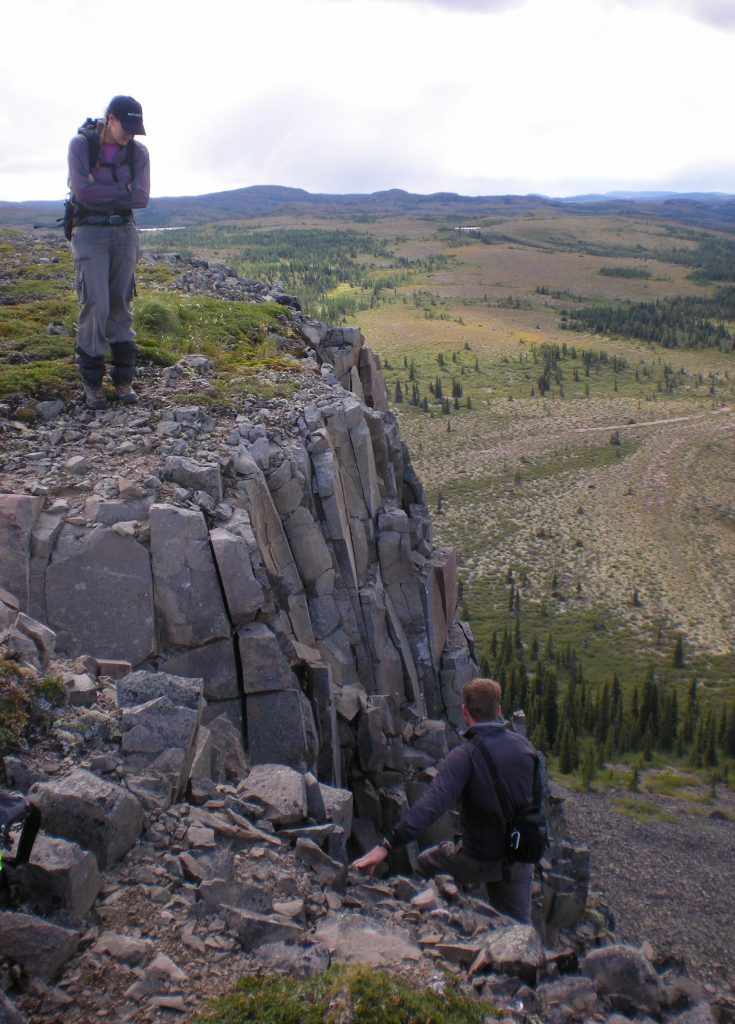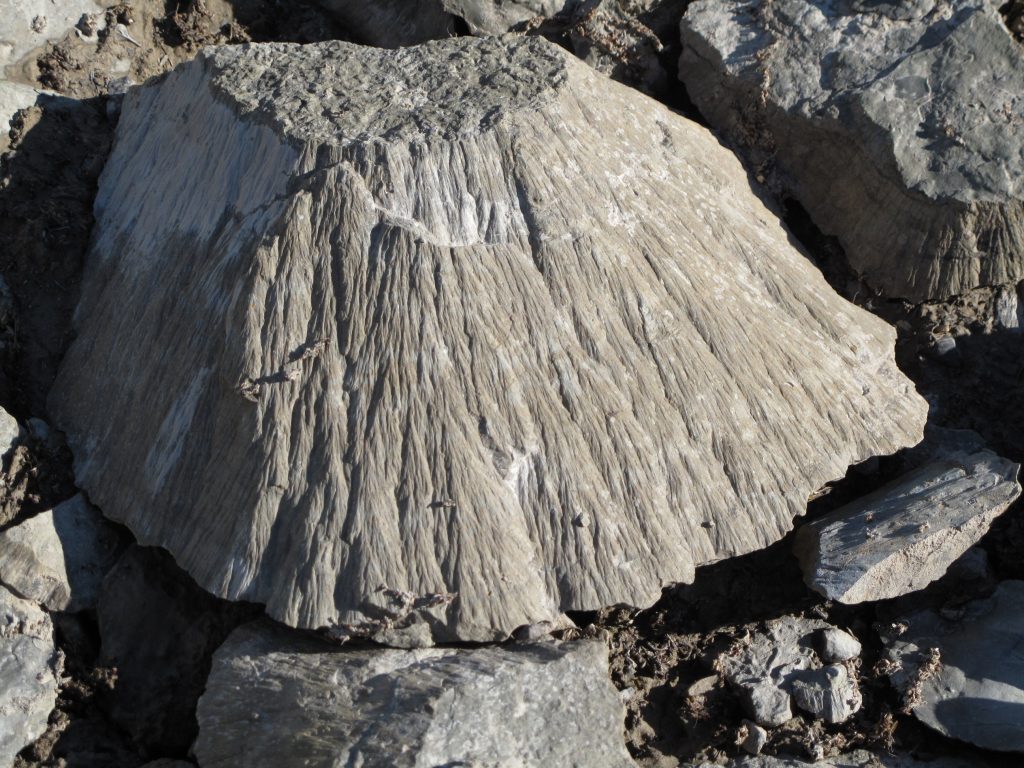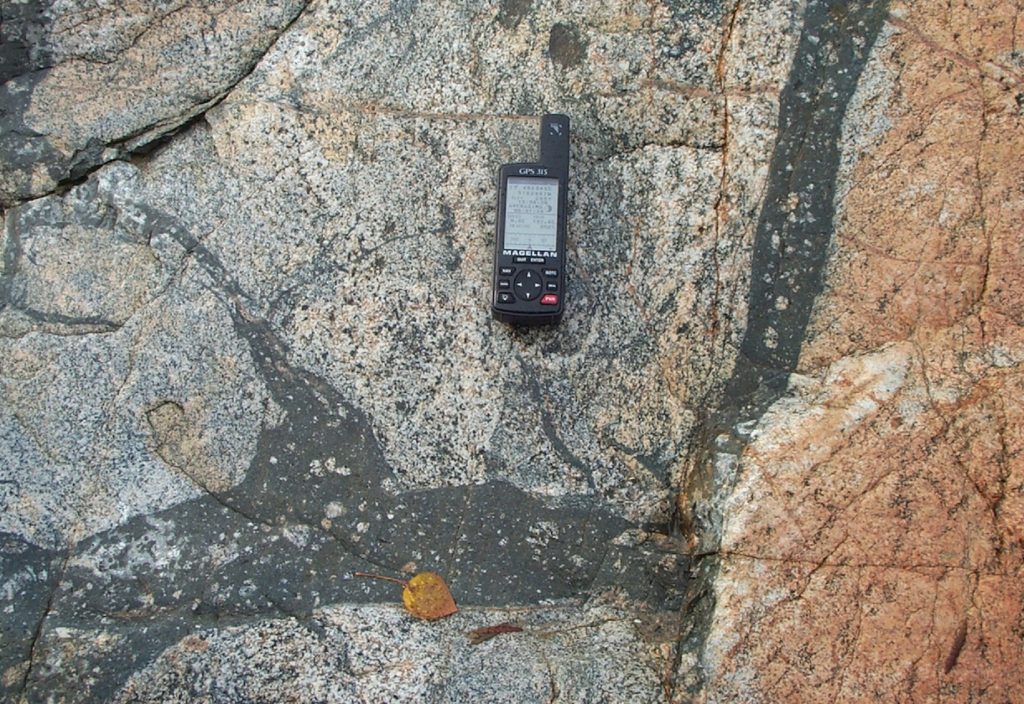Dr Gordon ‘Oz’ Osinski – From Destruction to Creation: Understanding Meteorite Impact Craters
Ever since the planets first formed, they have been bombarded with space rocks. Asteroid and cometary collisions are so forceful that planetary surfaces fracture and melt beneath them, leaving behind huge craters. These impact events have played an important role in our planet’s history, by shaping the geological landscape, producing valuable minerals, and affecting the evolution of life. Dr Gordon ‘Oz’ Osinski from the University of Western Ontario, Canada, aims to understand this fundamental process on Earth, Mars and the Moon – with important implications for space exploration, mining, and for understanding the origins of life.
The Incredible Power of Impacts
So common are asteroids and comets that turning your eyes skywards on any clear and dark night reveals multiples of these ‘shooting stars’ each hour. Thanks to the protection offered by our planet’s atmosphere, most of these space rocks never reach the ground. Instead, they break apart and burn up in an intense display of light and heat, rarely descending further than an altitude of 80 kilometres.
When these rocks are large enough to survive the journey through the atmosphere and reach the planet’s surface, they are called ‘meteorites’. Fragments of asteroids that are larger than a few tens of metres across can reach the surface at an enormous 20 kilometres per second, while comets of the same size can strike at up to 70 kilometres per second – an incredible 252,000 kilometres per hour. In comparison, a bullet fired from a modern rifle travels at up to 4,300 kilometres per hour.
Even the slowest impacts release around 15 times as much energy as an equivalent mass of TNT upon impact. The results of these impact events are clearly visible on our nearest celestial neighbour, the Moon. Similar craters are observed on all other rocky planets and moons across the Solar System, hinting at the frequency with which impact events have occurred. Earth has not escaped similar bombardments over its 4.5 billion years of existence, but much of the evidence has been lost or concealed by natural processes – such as plate tectonics, erosion, and volcanism.
The impact craters left behind by asteroids and comets that reach Earth’s surface range in diameter from tens of metres, to an enormous 250 kilometres – such as the Sudbury impact crater in Ontario. Impacts around this size have the power to cause mass extinctions, such as the Chicxulub impact in Mexico, which is believed to have caused the extinction on non-avian dinosaurs 66 million years ago.

Impact melt rocks at the Mistastin Lake impact structure, Labrador, Canada.
It may be hard to imagine that events so powerful could result in anything other than destruction. But even mass extinctions can provide opportunities for life to evolve in new directions. Without the Chicxulub impact, mammals would not have become the dominant animals on Earth – and humans wouldn’t exist today. And while large impacts may extinguish life, they could also form the cradle of life on barren planets – by delivering the building blocks and creating the right environmental conditions for early forms of life to emerge. Thus, impact craters could hold clues to understanding the origins of life, and may help the ongoing search for extraterrestrial life on other planetary bodies such as Mars.
Impact craters also have more immediate benefits to society. Many of the valuable resources extracted through mining are created during an impact event and deposited in and around impact craters. For instance, the Sudbury impact crater is rich in important metals, including nickel, copper, palladium, gold and platinum, and the Sudbury area hosts a major mining community as a result. Investigating impact cratering on Earth and other planets thus has applications in resource mining.
Dr Gordon ‘Oz’ Osinski, Professor in the Department of Earth Sciences and Director of the Institute for Earth and Space Exploration at the University of Western Ontario, has spent his career researching the beneficial effects of impact cratering. Leading an international team of researchers, Dr Osinski has conducted extensive fieldwork and laboratory studies of meteorite impacts – including collecting data on all 200 of Earth’s known impact craters through his Impact Earth initiative.
His work encompasses three major processes and products of impact events: to understand how rocks are metamorphosed and melted during impact events; how materials from impacts are ejected; and how the ‘hydrothermal’ – or hot water – environments within impact craters develop and evolve.

Dr Osinski conducting fieldwork above the clouds on the south coast of Devon Island, Nunavut, Canada.
Creation of a Crater
The formation of a crater during an impact event can be divided into three main stages. First, the asteroid or comet contacts and compresses the ground around the impact point. Second, material is displaced downward and outward by shockwaves and tension-release waves from the point of impact. Some of the material is ejected from the growing so-called transient crater, forming the characteristic bowl shape. Lastly, the crater undergoes modification, with melted and broken up rock flowing and settling both inside the crater and outside the crater rim. Dr Osinski has been studying both the formation of craters and the emplacement of impact ejecta.
‘Simple’ craters retain their bowl shape during the final modification stage. Depending on the size of the asteroid or comet, ‘complex’ craters can form, comprising a central peak and a crater rim that are heavily deformed and fractured. Very large complex impact craters sometimes exhibit one or more centrally uplifted rings, giving the crater the appearance of having two or more concentric peaks.
‘There remains no consensus as to how the peak-ring morphology forms, with some proposing it forms from the outwards collapse of a central peak, and others that this morphology is the result of the increased melt volumes as crater diameter increases, which results in melting of the peak,’ explains Dr Osinski. ‘This has resulted in uncertainty regarding the original morphology and structure of the largest impact structures on Earth: Chicxulub, Sudbury, and Vredefort.’
Dr Osinski and his colleagues have been contributing to our understanding by comparing impact structures on the Earth, Moon, and Mars. This allows them to differentiate local and site-specific effects from more general features of impact craters. His team has also been developing techniques and technologies for robotic and human operations on the surface of the Moon and Mars, which are also applicable to terrestrial mining operations.
Initially, Dr Osinski focused on craters between 2 to 40 kilometres in diameter. His team subsequently expanded this research to include large impact craters, with the aim of better understanding the original structure of the Sudbury impact crater and thus supporting targeted mining efforts. At around 250 kilometres across, the Sudbury crater is one of the largest found on Earth.

A shatter cone – formed through shock metamorphism.
Shocked and Melted Rocks
The incredible temperatures and pressures generated during a meteorite impact melts rocks near the point of impact. Other existing rocks undergo ‘shock metamorphism’ to become new kinds of rock without a great degree of melting. Impact melt rocks in some regions, such as the Sudbury crater in Ontario, contain economically important ore deposits that support a thriving mining industry.
Dr Osinski and his colleagues have helped to shape our understanding of these processes. Their fieldwork and powerful microscopic analysis of the rocks around several craters transformed our understanding of how ‘carbonate’ rocks and minerals – such as limestone or dolomite – respond to impact events. It was originally believed that these rocks do not melt during impact events, but rather disintegrate into carbon dioxide and other greenhouse gases – with implications for the planet’s climate post-impact.
However, the team demonstrated that carbonates do undergo melting during impact. ‘This work has important implications for assessing the environmental effects of impacts, such as the Chicxulub impact 66 million years ago that is blamed for the extinction of the dinosaurs and 60% of all species on Earth,’ says Dr Osinski.
‘Igneous’ rocks, such as granite or obsidian – formed from molten rock that has cooled and solidified – are created through natural processes within the Earth’s crust and through volcanism on the surface. Igneous rocks also form during meteorite impacts. Though formed through different processes, these rocks share similar characteristics, such as flow textures and cooling cracks, making their origin tricky to determine.
Dr Osinski synthesised information and methods for determining igneous rock origins using samples. However, he notes that samples are not always available, for example during exploration of other planets and moons. Remote sensing technologies may one day offer solutions to problem.

Sudbury Breccia – a rock produced via melting during the Sudbury impact event.
The Cradle of Life
In some of his recent research, Dr Osinski led a team of researchers in investigating the possibility that impact craters may have been the origin of life on Earth. It has long been believed that meteorite impacts would have presented a barrier to the emergence of early life, but Dr Osinski has turned that idea on its head. He posits that after the initial destruction, meteorite impacts can create a hospitable oasis for early life to form.
It is believed that early life formed in hot, wet environments. Impact events can generate these conditions by creating hydrothermal vents through cracks and fissures in the Earth’s crust, both on land and under the sea. Add this to the minerals, clays, and other chemical ingredients that are generated or delivered during impact – and the recipe for life may be created.
Impact events were far more frequent during the first 500 million years of the Solar System than they are now, lending weight to this hypothesis. Unfortunately, after billions of years of erosion, volcanism, and plate tectonics, we’ll never really know where or when life originated on Earth. But perhaps the finding could direct our search on other planets.
Impact craters on Mars – not subjected to the same processes that destroy the evidence on Earth – may help planetary scientists eventually solve the puzzle. If they know what to look for. ‘It’s a good place to start to explore the role of meteorite impacts in the origin of life, as long as they look out for the habitats, nutrients, and building blocks for life that we outlined in our study,’ says Dr Osinski.
For now, the hunt for the origin of life continues. Dr Osinski’s research on the beneficial effects of impact craters on Earth and beyond could one day contribute to the discovery of a generation. In a recent paper, he concludes, ‘Would it not be poetic that impacts, long seen as harbingers of death, turn out to have in fact been the cradle of life?’
Reference
https://doi.org/10.33548/SCIENTIA676
Meet the researcher

Dr Gordon R. Osinski
Department of Earth Sciences and the Institute for Earth and Space Exploration
University of Western Ontario
London, Ontario
Canada
Having studied Geology during his undergraduate degree at the University of St. Andrews, Scotland, Dr Gordon ‘Oz’ Osinski relocated to Canada, earning his PhD from the University of New Brunswick. He currently holds the position of Professor in the Department of Earth Sciences and is Director of the Institute for Earth and Space Exploration at the University of Western Ontario. He is also Director of the Canadian Lunar Research Network and the founder and Chair of the Planetary Sciences Division of the Geological Association of Canada. Dr Osinski is a member of several advisory committees, including the Space Advisory Board of the Government of Canada. He uses fieldwork, advanced laboratory analysis, modelling, remote sensing, and other techniques to investigate meteorite impact craters on the Earth, Moon and Mars. Dr Osinski’s work has achieved international acclaim. He has published over 200 papers in peer-reviewed journals and has given over 100 conference presentations.
CONTACT
E: gosinski@uwo.ca
KEY COLLABORATORS
Charles Cockell, University of Edinburgh
Gareth Collins, Imperial College London
Roberta Flemming, University of Western Ontario
Richard Grieve, Natural Resources Canada
Ken McIssac, University of Western Ontario
Catherine Neish, University of Western Ontario
Alexandra Pontefract, Georgetown University
Livio Tornabene, University of Western Ontario
Mark Jellinek, University of British Columbia
Anna Grau-Galofre, Arizona State University
FUNDING
Canada Foundation for Innovation
Canadian Space Agency
Mitacs
Ontario Centres of Excellence
Ontario Research Fund
Natural Resources Canada
Natural Sciences and Engineering Research Council of Canada
FURTHER READING
GR Osinski, CS Cockell, A Pontefract, HM Sapers, The Role of Meteorite Impacts in the Origin of Life, Astrobiology, 2020, 20, 1121. doi.org/10.1089/ast.2019.2203
GR Osinski, RA Grieve, JE Bleacher, CD Neish, EA Pilles, LL Tornabene, Igneous rocks formed by hypervelocity impact, Journal of Volcanology and Geothermal Research, 2018, 353, 25. doi.org/10.1016/j.jvolgeores.2018.01.015

Want to republish our articles?
We encourage all formats of sharing and republishing of our articles. Whether you want to host on your website, publication or blog, we welcome this. Find out more
Creative Commons Licence
(CC BY 4.0)
This work is licensed under a Creative Commons Attribution 4.0 International License. 
What does this mean?
Share: You can copy and redistribute the material in any medium or format
Adapt: You can change, and build upon the material for any purpose, even commercially.
Credit: You must give appropriate credit, provide a link to the license, and indicate if changes were made.
More articles you may like
Grandmothers: Innovation Through Tradition
Grandmother Project – Change through Culture (GMP) is an organisation dedicated to documenting the role of grandmothers and demonstrating the effectiveness of grandmother-inclusive strategies in improving the health and well-being of women, children, and adolescents. GMP’s groundbreaking work challenges conventional wisdom to transform community-based interventions in Africa and beyond, harnessing a powerful but often overlooked resource: the wisdom and influence of grandmothers.
Dr Robert Larkin | Cultivating Change to Improve Soil Health and Increase Potato Yield
Environmental quality and food production are facing the pressing challenges of climate change and global population growth. Dr Robert Larkin from the United States Department of Agriculture-Agricultural Research Service (USDA-ARS) and a team of plant scientists developed and tested a range of crop management systems to help overcome these compounding challenges. Their work is improving soil health and increasing the yield of potato crops, contributing to the future food security of nations.
Professor Giorgio Buttazzo | Artificial Intelligence and a Crossroads for Humanity
Where do we stand with artificial intelligence? Might machines take over our jobs? Can machines become conscious? Might we be harmed by robots? What is the future of humanity? Professor Giorgio Buttazzo of Scuola Superiore Sant’Anna is an expert in artificial intelligence and neural networks. In a recent publication, he provides considered insights into some of the most pressing questions surrounding artificial intelligence and humanity.
Dr Ralf Adam | New Technologies Shaping the Future of Oral Hygiene
Understanding the efficiency of various toothbrush technologies is essential for achieving optimal oral health. Dr Ralf Adam, who leads a dedicated team at Procter & Gamble in Germany, is keen to investigate the complexities of these technologies. His team have provided new insights into the best toothbrush types for plaque removal and the maintenance of gum health. By highlighting the importance of informed oral care decisions and ongoing investigations, this vital research works towards ensuring everyone can achieve a brighter, healthier smile.




